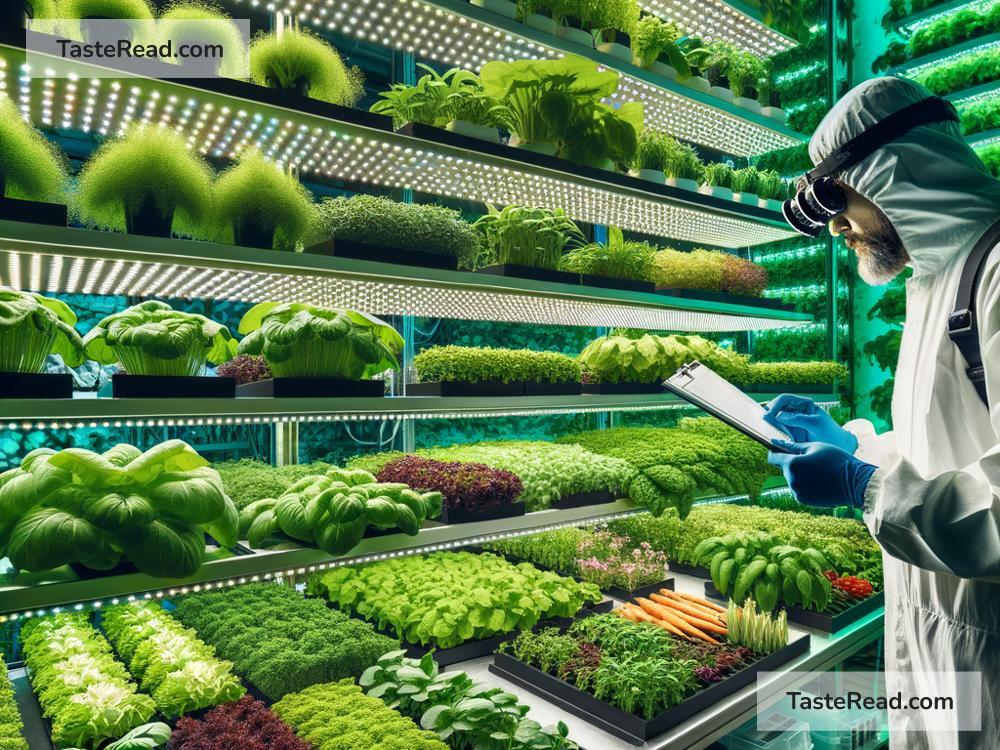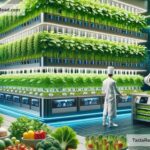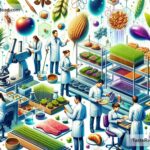The Future of Food: Building Sustainable Global Models
When we think about the future of food, it’s easy to imagine high-tech devices delivering our meals or futuristic farms growing crops in ways we’ve never seen before. While technology will play an important role, the bigger challenge is ensuring there’s enough food for everyone while protecting our planet. Right now, climate change, population growth, and resource depletion are making this harder. To solve these problems, we need sustainable global food systems that are fair, eco-friendly, and able to meet the needs of billions of people.
What’s Happening to Food Today?
Our planet is facing some serious food-related challenges. Here are a few key problems:
-
Growing Population: By 2050, it’s estimated there will be nearly 10 billion people on Earth. Feeding all those people is a big challenge, especially when farmland is limited.
-
Climate Change: Rising temperatures, unpredictable weather, and natural disasters are making it harder to grow crops. Floods and droughts are destroying farmland, and animals that farmers raise for food are struggling to adapt.
-
Soil and Water Issues: Farming requires healthy soil and plenty of water, but fertilizers, pesticides, and deforestation are harming the land. Water shortages are also becoming a major problem in many parts of the world.
-
Food Waste: Around one-third of the food produced globally is wasted. This happens in homes, supermarkets, and farms. Imagine throwing away a third of everything you grow or buy—it’s not just wasteful, it’s harmful to the environment.
-
Inequality: While some people have access to plenty of food, others go hungry every day. Millions of people don’t have enough to eat, even though there’s enough food in the world.
To create a better food future, we need innovative solutions that address these challenges while supporting the health of both people and the planet.
What is a Sustainable Food Model?
A sustainable food model is a system of producing, distributing, and consuming food that meets current needs without harming future generations. It focuses on:
-
Environmental Protection: Farming should avoid damaging ecosystems, polluting water, and contributing to climate change.
-
Fair Distribution: Everyone should have access to affordable, nutritious food, no matter where they live or how much money they have.
-
Efficient Use of Resources: Every part of the food system—from growing and harvesting to transporting and consuming—should minimize waste and use resources wisely.
Innovations Shaping the Future of Food
Here are some exciting ideas and technologies that could help us achieve sustainable global food models:
-
Vertical Farming: Imagine farming in tall buildings rather than open fields. Vertical farms use less land and can grow crops year-round in controlled environments. These farms also require less water and often use renewable energy.
-
Lab-Grown Meat: Scientists have learned how to create meat without raising animals. Lab-grown or “cultivated” meat is made by taking cells from animals and growing them in bioreactors. This process produces food without the environmental impact of traditional livestock farming.
-
Plant-Based Proteins: As eating meat becomes less sustainable, many companies are creating tasty alternatives from plants, like burgers made from soy or pea protein. These options use fewer resources and produce less greenhouse gas emissions compared to raising animals.
-
AI in Agriculture: Artificial intelligence (AI) is helping farmers monitor crops, predict weather changes, and use water and fertilizer efficiently. AI tools make it easier for farmers to maximize yields without harming the environment.
-
Reducing Food Waste: Apps and technologies are connecting people with surplus food to those in need. Better storage solutions and “ugly produce” campaigns (which encourage people to buy imperfect but perfectly edible fruits and vegetables) can also cut down on food waste.
Changing What We Eat
For food systems to be sustainable, everyone will need to rethink how we eat. Many experts encourage us to:
-
Eat Less Meat: Meat production, especially beef, uses lots of land and water while producing greenhouse gases. Switching to plant-based meals more often can help the planet.
-
Support Local Food: Buying from local farms reduces the environmental impact of transporting food long distances and supports local economies.
-
Try New Foods: Some cultures have relied on insects as a food source for centuries. Insects like crickets and mealworms are nutritious and require fewer resources to raise than traditional livestock.
-
Choose Seasonal and Sustainable Products: Eating foods that are in season where you live, and those farmed sustainably, minimizes environmental harm.
Working Together for a Better Food Future
No single person, company, or country can fix the food system alone. Governments, businesses, scientists, and individuals must work together. Governments can promote policies that support sustainable farming and reduce food waste. Businesses can create products and technologies that address food challenges. Scientists can research innovative solutions to grow food in better ways. And individuals can make smarter food choices every day.
The Takeaway
The future of food is full of possibilities. By embracing sustainable practices and using innovative technologies, we can feed the growing population while caring for our planet. Whether it’s through lab-grown meat, vertical farms, or reducing food waste, the goal is to create a system where everyone has access to nutritious, affordable food, and we protect our resources for generations to come.
The food on your plate has a huge impact—not just on your health, but on the world. So, let’s work together to create a future where food is sustainable, delicious, and fair for everyone. After all, the choices we make today will shape what’s on the menu tomorrow.


